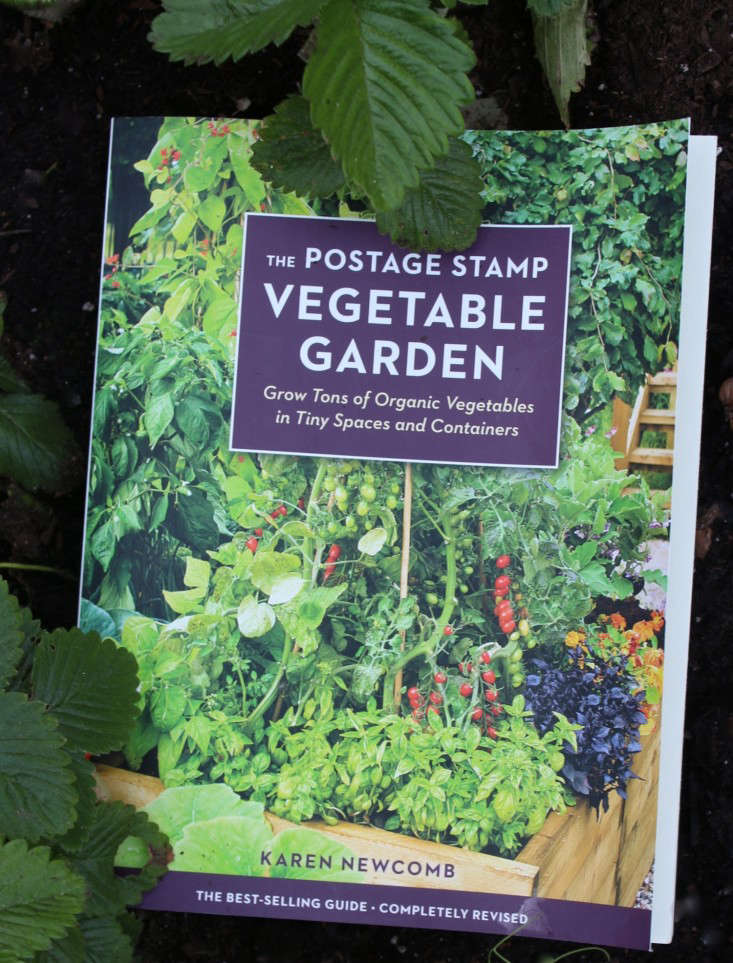When the original version of The Postage Stamp Vegetable Garden was published in 1975, supermarket cauliflower cost 98 cents a head (the nerve!), and most tomatoes you could buy tasted like cardboard. Author Duane Newcomb’s suggestions to turn any little patch of dirt into a growing ground and to plant vegetables close together to intensify yield were empowering enough to sell 500,000 copies to people sick of choosing between iceberg and iceberg in the lettuce aisle.
We have come a long way. One in three US households grows food nowadays–and the rest of us want to. Food you grow tastes better, is better for you, and costs less. So a new edition of The Postage Stamp Vegetable Garden that goes on sale today (updated by Newcomb’s widow, Karen), is a welcome guide. In addition to a new section on heirloom vegetables, the book offers step-by-step instructions to make even the tiniest vegetable garden a huge success.

Above: Photograph by Erin Boyle.
Whether you want to grow a single pot of herbs on a balcony or dedicate a 10-by-10-foot garden bed to the endeavor, this book will take you from seed to harvest, capably. Karen Newcomb offers simple suggestions about where to site a planting bed (in a spot that gets a minimum of six hours of sun a day) on soil preparation, as well as how to plant (scatter seeds rather than planting in rows to maximize use of the space).
The book, which recommends planting closely to cut down on weeds and water use, also offers nearly a dozen sample planting plans for garden beds of various shapes, ranging from 4 by 4 feet to 10 by 10 feet in size.

Above: A planting plan for a 10-by-4-foot spring garden.

Above: Photograph by Michelle Slatalla.
For my own 3-by-15-foot edible garden, I am taking Newcomb’s advice on companion plants. She for example recommends planting basil near tomatoes (makes them grow bigger) and lettuce (to repel whiteflies and aphids).
All plants exude chemicals through their roots which can have either a positive or negative effect on other plants; a helpful list of companion plants is included.
Above: A paperback copy of The Postage Stamp Vegetable Garden is $13.57 from Amazon.
For more tips on starting a vegetable garden, see:
- Hardscaping 101: Design Guide for Edible Gardens
- Gardening 101: How to Sprout a Seed
- The Best Vegetables You’ll Ever Taste










Have a Question or Comment About This Post?
Join the conversation